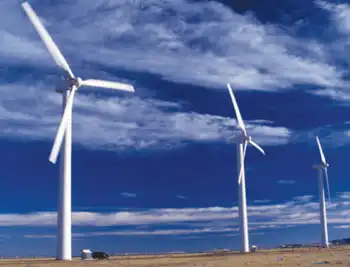Giant Floating Solar Power Stations Are Japans Newest Power Source
TOKYO - - After the 2011 Fukushima nuclear disaster, Japan got serious about investing in renewable energy, becoming one of the world leaders in solar power. But the nation faced a problem in its solar efforts: a lack of suitable land.
In a promising solution, the country is now turning to floating offshore solar power stations, this month going live with its largest such systems to date in two reservoirs in Kato City in the nation’s Hyogo prefecture, Quartz reports. The systems consist of almost 9,000 solar panels on a bed of polyethylene and are fully waterproofed. According to Kyocera , the electronics manufacturer behind the floating solar systems, the two new stations in Kato City are expected to generate 3,300 megawatt hours annually, providing enough electricity to power about 920 typical households. The company is also behind another floating solar farm just east of Tokyo , slated to open next March, that will be even larger, powering almost 5,000 households.
The “mega-plants†have a number of benefits compared to traditional land-based solar plants. As Wired previously reported, the floating plants generate power more efficiently because of the cooling effect of the water underneath the system. In addition, the shade generated by the stations helps reduce both water evaporation and algae growth, and the systems overall are also drought-friendly thanks to how much water they conserve.
There are some concerns, too, such as how the structures will be able to withstand natural disasters. According to the National Geographic , however, the systems were found to withstand hurricane-speed winds up to 118 miles per hour in testing at Onera, France’s aerospace lab. In addition, the systems have been described as earthquake-proof. But they also can be costlier to install and maintain than traditional solar systems.
Still, Kyocera argues that the floating islands could play a huge role in helping Japan meet its goal of achieving 100 percent renewable energy by the year 2040.
“[T]he country has many reservoirs for agricultural and flood-control purposes,†Ichiro Ikeda , a Kyocera spokesman, told the National Geographic . “There is great potential in carrying out solar power generation on these water surfaces.
Japan isn’t the only country investing in these solar “islands,†either. Projects are already online or underway in India , Australia , Great Britain , Brazil and in Sonoma County, California.
Related News

Berlin Electric Utility Wins National Safety Award
BERLIN - The Town of Berlin Electric Utility Department has been recognized for its outstanding safety practices with the prestigious Safety Award of Excellence from the American Public Power Association (APPA). This national honor is a testament to the utility’s commitment to maintaining the highest standards of safety for its workers, ensuring both their well-being and the continued reliability of the electrical services provided to the community.
Recognition for Excellence
In an era when workplace safety is a critical concern, the Town of Berlin Electric Utility Department’s achievement stands out. The department earned the Gold Designation award in the category…




